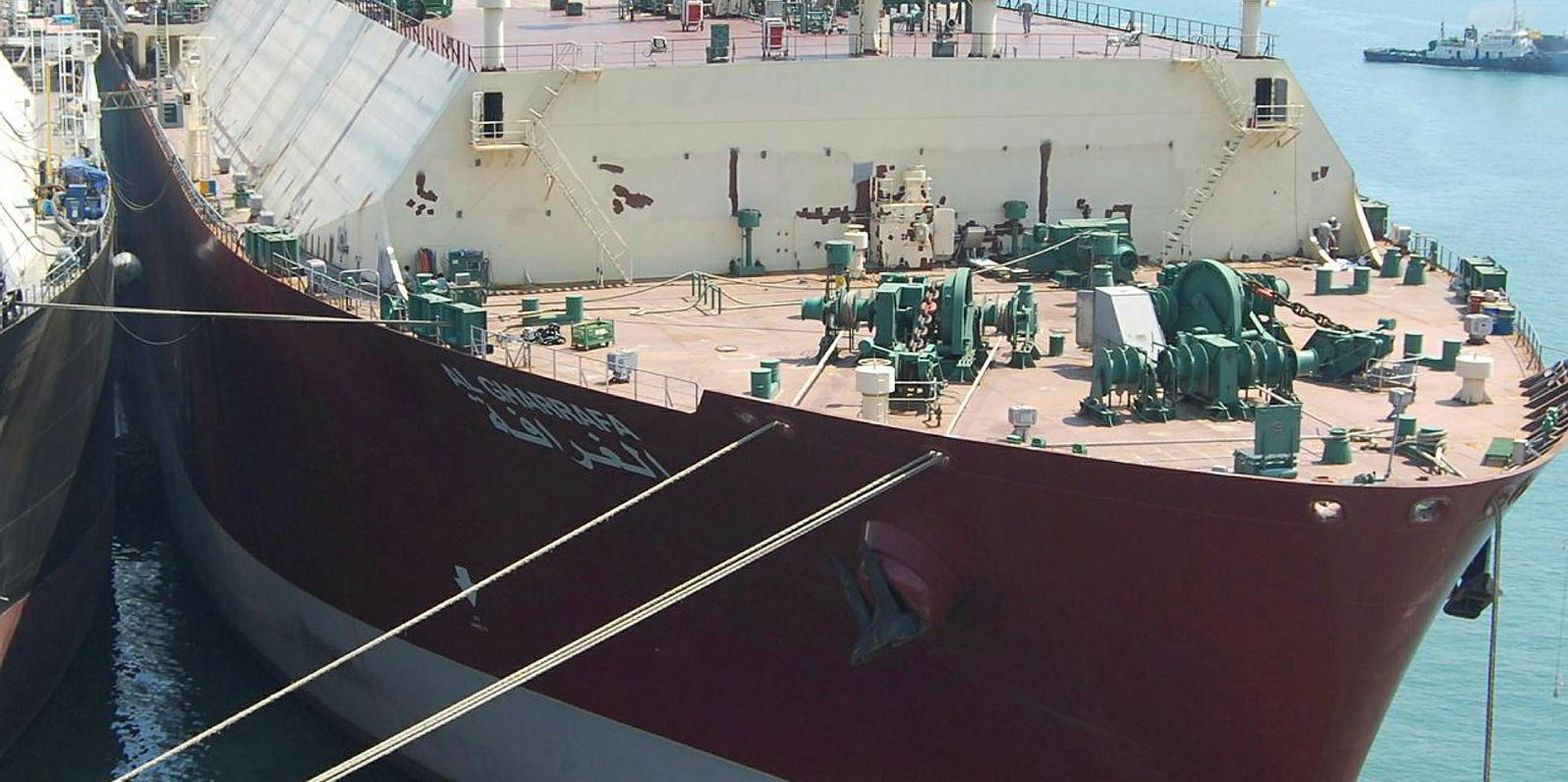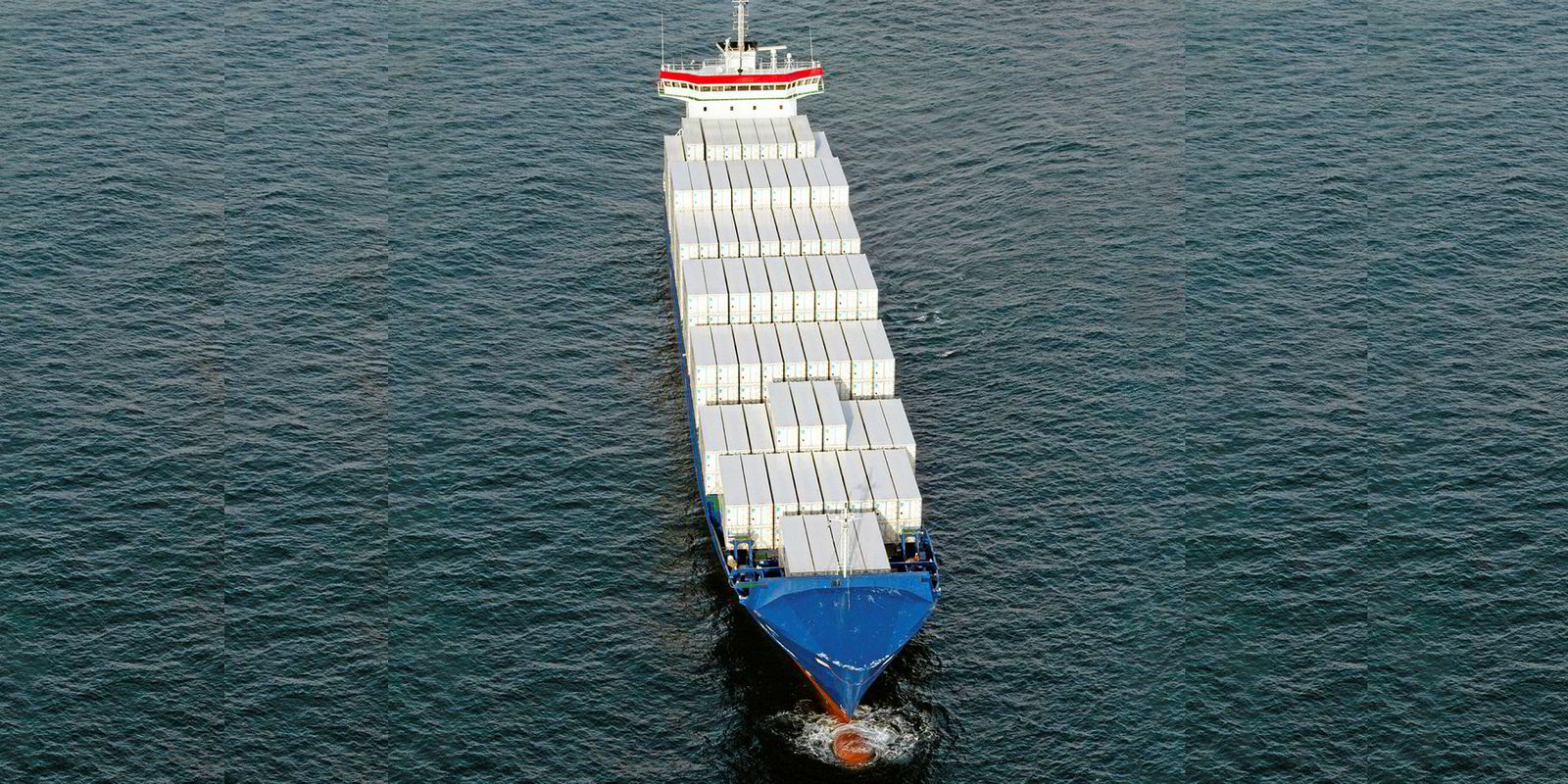Qatar is in discussions about retrofitting all of its Q-Flex and Q-Max LNG carriers to burn gas in their main engines in preparation for the 2020 emissions regulations.
Industry sources told TradeWinds that talks are underway with MAN Energy Solutions, which retrofitted the 267,335-cbm Q-Max Rasheeda (built 2010) — the only Qatari ship to be converted to date.
One source insisted that a decision has already been made to proceed with the work on the remaining 44 Q-ships, which are operated by state-owned Nakilat.
Bill of nearly $900m
The Rasheeda job is believed to have cost $20m to $30m. Even at the lower end of the range, that could result in a bill of close to $900m for Qatar, the Middle East’s LNG giant. But observers point out that the one-off investment would make the fleet 2020-compliant.
Nakilat did not respond to a request for confirmation of the plans before TradeWinds went to press.
Those familiar with the Qatari LNG fleet say the ships’ long-term charterer, LNG producer Qatargas, is struggling to come to a decision on their bunkering strategy for 2020.
The 31 Q-Flex vessels, of 210,000 cbm to 215,000 cbm, and the remaining 13 larger Q-Max cousins — the world’s largest trading LNG carriers — currently run on heavy fuel oil (HFO).
They are also fitted with heavily used onboard reliquefaction plants to enable them to deliver full cargoes.
To make the LNG goliaths compliant, they would need to be fitted with exhaust gas emission scrubbers, switch to low-sulphur fuel oil (LSFO) or undergo engine retrofits so they can use gas.
Those who know the ships well say the switch to LSFO would result in a huge hike to the fleet’s fuel bill.
When the Q-ship fleet was ordered, gas propulsion was in its early stages of development. It was considered as an option for the vessels but this was later ruled out.
The decision was taken to retrofit the Rasheeda in early 2014. It was the first to be fitted with MAN’s M-type, electronically controlled, gas-injection propulsion system, and extensive trials were conducted to monitor the ship’s performance before it was returned to service.
Economic savings
The original plan was to retrofit one Q-Max and one Q-Flex as test cases to see how the operational and economic savings stacked up. But in the end, just the larger ship went in for the engine refit.
The three-month job was carried out at Qatar’s Erhama bin Jaber Al Jalahma Shipyard and the Rasheeda was redelivered to Nakilat in August 2015.
TradeWinds reported last year that Qatar had called off plans for any further engine retrofits. Sources at the time explained that most of the ships were approaching their second dry-dockings and it was felt they might be too old to reap the benefit of the investment. The low price of HFO at the time was said to be another factor.
Nakilat operates the Q-ships under a strategic alliance with Shell International Trading and Shipping Co but they are being progressively handed over to Nakilat’s management under the original agreement with the energy major.




